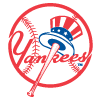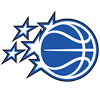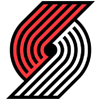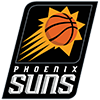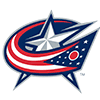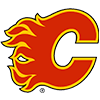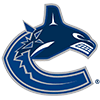It's not a secret; I'm a spreadsheet guy. My rankings are driven by projections. I've written ad nauseam about the shortcomings of projection theory and the flaws with valuation, but I still favor a formulaic baseline as my foundation.
With drafts beginning earlier and earlier each season, social media posts referencing "My 2022 Rankings" are as widespread as pumpkin spice products. To be honest, every time I see one, I cringe. I'm talking about the rankings, not pumpkin spice. The only pumpkin spice thing I've ever had is a Kind bar, and they're pretty good. They're even better when the price drops in December.
I get that not everyone does the Excel thing when it comes to rankings. Even so, I have trouble trusting rankings based on nothing more than feel and instinct.
On the other hand, I know it's wrong to just "take one off the top" of an objective rankings list. The aforementioned faults associated with projections and the resulting values are one reason, with roster construction, risk profile and team needs comprising some others.
Even so, I'm uncomfortable ranking more than a handful of players by hand. Don't get me wrong, I'll absorb every rankings list made available in the next few months, and I'll pay them heed. However, there will also be a lot of head shaking on my part.
As discussed last time, I'll be pairing with Derek VanRiper in about a week, as the Premature Edraftulation League is slated to commence the evening
It's not a secret; I'm a spreadsheet guy. My rankings are driven by projections. I've written ad nauseam about the shortcomings of projection theory and the flaws with valuation, but I still favor a formulaic baseline as my foundation.
With drafts beginning earlier and earlier each season, social media posts referencing "My 2022 Rankings" are as widespread as pumpkin spice products. To be honest, every time I see one, I cringe. I'm talking about the rankings, not pumpkin spice. The only pumpkin spice thing I've ever had is a Kind bar, and they're pretty good. They're even better when the price drops in December.
I get that not everyone does the Excel thing when it comes to rankings. Even so, I have trouble trusting rankings based on nothing more than feel and instinct.
On the other hand, I know it's wrong to just "take one off the top" of an objective rankings list. The aforementioned faults associated with projections and the resulting values are one reason, with roster construction, risk profile and team needs comprising some others.
Even so, I'm uncomfortable ranking more than a handful of players by hand. Don't get me wrong, I'll absorb every rankings list made available in the next few months, and I'll pay them heed. However, there will also be a lot of head shaking on my part.
As discussed last time, I'll be pairing with Derek VanRiper in about a week, as the Premature Edraftulation League is slated to commence the evening of October 1, exactly one month before I launch my first set of projections and rankings. Our general process is throwing a bunch of names out there well before our turn, then we thin the field as the draft approaches our pick. When it gets to us, we're usually down to two or three names. When you're contemplating just a few names, rankings are moot.
Now that I write this, it strikes me this is how almost everyone drafts, though I wish some did more pruning before they were actually on the clock. Anyway, drafting like this eliminates the need for hard rankings. We're tabling around 10 names for each pick. Okay, maybe you consider the top 10 names left on the cheat sheet, but do you really need rankings to come up with the most logical choices? I'm not so sure.
A rankings list, or cheat sheet, is best considered a bookkeeping device. I've made this point before, but it was more nonchalant. It needs to be a point of emphasis. The primary purpose of rankings should be to have the entire inventory listed in the vicinity of where they will be drafted. This is most relevant for players without a full season's worth of playing time the previous year. Keep in mind most early draft rooms will use 2021 stats for default rankings. As such, the most important aspect of my own projections will be the playing time element, since it will drive the player into the appropriate neighborhood.
I'm a firm believer in floor from my early picks, even at the expense of huge upside. Obviously, starting with a reliable stud with a high ceiling is ideal, but the subset of players fitting that profile is less reliable than in the past. Fernando Tatis, Ronald Acuna, Mookie Betts, Mike Trout and Christian Yelich are examples of former (and in some cases, present) first rounders who have dropped down a peg or two in the dependability department.
With all this as a backdrop, here is how I rank envision the first round. I'll break the players into groups, but please understand there are some players classified in the latter groups who I would draft ahead of the first group. Those in the first group include early, middle and late first rounders.
GROUP 1
Granted, no one is immune to injury or a down season, but I'm most confident in the ensuing players to stay healthy and produce at a high level. They're ordered in my off-the-cuff ranking, but please don't hold me to it.
Yes, I would consider taking Turner with the first overall pick. His track record is long enough to make that leap. Admittedly, doing so leaves work to be done in homers and RBI, but I'd rather chase those than steals.
While I prefer Turner, if DVR pushes for Soto, I'll be happy to consent. That said, if I know the athletic half of the Athletic and Non-Athletic duo, he'll favor Turner too. The only downfall with Soto is team context. It's unclear what the Nationals will do over the winter. Teams could pitch around Soto and even if they attack him, his run production will lag those with better lineup support. Well, at least on paper. You have to like the double-digit steals potential too, though it wouldn't be shocking if Soto fell a bit short next season.
If Ramirez's baseline batting average were 15-20 points higher, he'd lead the group. Still, if Turner and Soto are off the board, I'll make my case for Ramirez as high as third overall. Even though the Guardians lineup may also be lacking, Ramirez isn't the type opposing teams fear.
One of the ensuing groups is players who have flashed first-round potential but lack the track record or durability to make the cut here. While I could justify having Guerrero at the top of that group, I trust his change in approach (more fly balls) is sustainable and the Blue Jays lineup is bonkers.
I'll be curious to see if there is a first-half/second-half narrative espoused by those not ready to commit to Guerrero owning his new skill level. My guess is some will egregiously cite playing in Dunedin and Buffalo before finishing in the Rogers Centre. Yes, Guerrero's first half will be better than his second half, but "What if he doubles his second half production?" isn't the right approach. Usually, a player lands near where he did the prior campaign by taking a more consistent pathway.
Walker Buehler and Gerrit Cole
This is another coin flip, at least currently. If MLB moves to a permanent designated hitter, that's enough to give Cole the edge. For the record, these are the only two arms I'd consider in the first round. As mentioned above, Buehler and Cole aren't necessarily fifth and sixth overall. Presently, they may be. However, as will be explained, what transpires in the offseason will influence my feeling on several players.
Placing Bichette in the limited track record tier could be justified, but he's shown me enough to take the leap of faith and include him here. Admittedly, one season isn't enough to label him as reliable in terms of health, but I'm doing it anyway. Skills wise, I prefer more seasons with numbers akin to this season, but since Bichette contributes across the board and is part of a potent lineup, there's a decent margin of error. That is, if there's a drop in one of his main skills (power, speed, average), the others will likely remain at a level that generates ample production to merit first-round status.
The bottom line is I trust Merrifield will keep running, even in his age-32 season, though expecting another 40-plus steals campaign is optimistic. Drafting Merrifield this early renders an even larger gap in power than with Turner, but whether Merrifield goes in the first or second, you'll have two players rostered before Turner gets a friend.
Obviously, this means I feel the market will rank Merrifield in the top 30. Is that really going out on a limb?
The challenge will be deciding when to draft Merrifield before his market price is established. Do I make my case in the first, or take the chance he falls to the second? This is one of the reasons I love this draft; it's so pure, uninhibited, free of outside influences.
Really? Isn't he prone to injury?
No. No, he isn't.
At most, Harper will play 140 games this season. Omitting 2020 when he played in 58 of 60 games, he has appeared in fewer than 140 games only once since 2015. I'll take his 2021 campaign as a playing time floor.
As for Harper's numbers, he'll be hard-pressed to repeat the elevated average, but 33-35 homers and 13-15 steals is fair – and worthy of back end of the first round consideration.
I don't recall if it was on a podcast with Clay Link or SiriusXM MLB Network Radio when Jeff Erickson filled in for Clay, but we discussed Ohtani and my contention was if all Ohtani does is hit, he's a first-round player. Some giveback should be expected, but there's plenty of cushion with both homers and steals to keep Ohtani as a top producer. Sure, there is injury risk (it bugs me that as a left-handed hitter, his pitching hand is exposed) but the reward outweighs the risk, at least for me.
Yawn. Who cares, he gets the job done. You may as well call him Triple F (Freddie Floor Freeman).
GROUP 2
These have been or could be No. 1 overall picks if health weren't an issue. One is coming off surgery while two more are candidates for a procedure in the offseason. If things look good, all are options to be picked in the top five. They're listed in order of confidence they'll be fully healthy next season, and not by their potential production. Of course, their health risk is still speculation on my part.
I could be wrong (it wouldn't be the first time) but a bone spur in his hip doesn't seem as threatening as what some others are dealing with. Maybe the surgery and recovery is more difficult than I'm assuming. If so, I'll adjust the order.
Acuna is listed before Tatis because the Atlanta outfielder has already undergone his procedure and has a known rehab schedule. We won't know his exact timetable until after the New Year, but there's at least a chance Acuna is ready around Opening Day. We also don't know how much he'll run. As good as he is, he needs the bags to warrant first-round status.
Will he have shoulder surgery? If he does, what will they find? If he doesn't, is he a risk next season? The catch is, this is all under the shroud of Tatis being the unequivocal best player in fantasy when healthy, especially since Acuna's running game is a mystery.
FOMO, fear of missing out. I talked about it in the spring. If anyone else had the same injury history as Trout, he'd be out of the top 50. But he's Mike Freaking Trout!
Trout's running is almost assured to remain infrequent, yielding a reason to overlook the health risk and blame a rankings drop on something else. My guess is, I will have no clue where to rank Trout. I'll come up with a conservative playing time estimate and apply it to a weighted average of his skills, but it will come down to being on the clock and thinking, "It's time!" regardless of what the value in a vacuum indicates.
GROUP 3
This group will just be listed without an accompanying blurb. There will be an entire offseason to share my individual breakdowns of this group. The relevant commentary for this discussion is they all are currently exhibiting first-round production but lack enough of a track record to compete with Group 1. My guess is recency bias will take hold and some will be elevated to the first round anyway. For the last two, I'll cop to another form of bias. I believe the technical term is "homerism".













